Interview with David Pybus around Scents of Time: Invitation To Smell Like Divine Divas {Fragrance Interview}
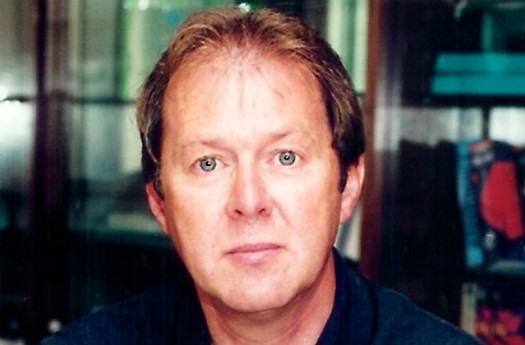
Interview with David Pybus Around Scents of Time & The New Maya
David Pybus, by his own admission, is a chemist turned "aromancer" in order to satisfy the more artistic streak in his personality. He is also an author and has written three books: The Chemistry of Fragrances (with Charles Sell), Kodo, The Way of Incense, and Transports of Delights, an anthology of poetic texts following an aromatic thematic, excerpted from world literature.
He now hunts for ancient archaeological odoriferous remnants or manuscript records of fragrances in order to recreate them as wearable scents for today's perfume aficionados under his business label, Scents of Time (soon to become an e-commerce site too). His passion for bringing out long lost scents out of the vaults of history has earned him the nickname of "Indiana Jones of the perfume industry".
Pybus released three perfumes last year, as previously announced, while a new one called Maya just launched this fall. Next year people will have the opportunity of experiencing two more intriguing perfumes based on phials salvaged from the infamous shipwreck of the Titanic, a floral scent for women and a woody one for men, both called Night Star.
We wanted to understand better his venture, the reception it has received, and so asked him for his thoughts.
TSS: I was wondering what kind of interest have you seen manifested for your "Indiana-Jones" fragrances?
David Pybus: Early days yet as really only launched 3 weeks ago at major UK retailer and it's still 7 weeks to Xmas, but sales steadily rising. Hardest thing is still public awareness. I won £80,000 to create Scents of Time. A major fragrance House probably spends that on one magazine ad or TV placement so I am up against it in terms of creating a presence.
- Have you felt that the specialized scope of your venture spoke best to the usual suspects (history buffs, academics, museum-goers...) or have you experienced some surprises there?
First launch was at the British Museum which of course is serious archeological stuff! The range was a sell out on day one and has been steadily selling since. With 5 million visitors a year this is a great outlet for me. Wish I could get the Metropolitan Museum in New York interested!...
David Pybus setting up a head-space analysis session for the blue lotus. Perfumer Montserrat Moline of Givaudan taking down some notes. Nenufar incorporates the reconstituted scent of the blue lotus.
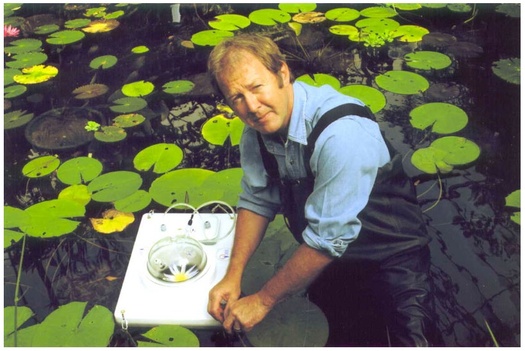
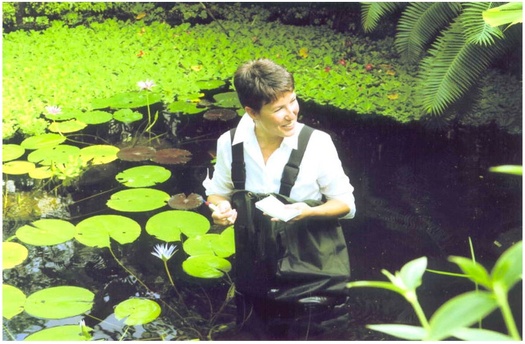
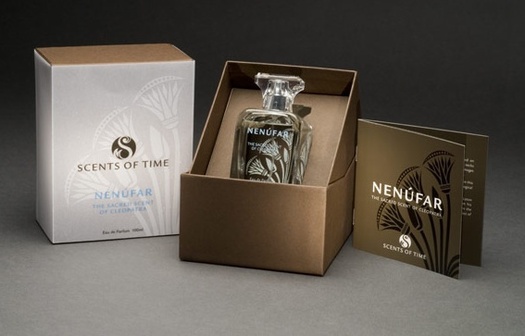
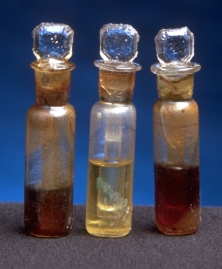
- Did you have a target-group in mind at the outset, i.e., did you do any market research in the traditional sense?
My market is well heeled women (mainly) who travel and have sophisticated taste. They broadly know the stories of Pompeii, Cleopatra etc and have an interest in history and perfumery. The stories are excellent dinner table material. These are not just shrink wrapped bottles of smelly but Bottled history with the story and also a full fragrance description and fragrance family (from Michael Edwards' work).
- How do you go about marketing this kind of very unique and a priori somewhat arcane fragrance composition?
I am looking for new distributive outlets for perfume that match the credo of the perfumes . So not just a museum and a department store but a record Company and an "unusual gift "gadget Company. Would like to establish similar with US and mainland Europe. I have started with the cruise ships (people travelling to Pompeii, Egypt, Mexico) and of course duty free would be a prime target within which to establish. Unfortunately number 2 (Auto grill) in UK has just bought out number 1 (World Duty Free) so I have to await a period of rationalization in duty free in UK
-Which is your favorite?
Maya as I lived 3 years in Mexico and have a special feel for the country, Ankh in terms of the only one of the four (As Unisex) that I can wear
-Which is the best-seller so far?
Maya is new - the other three have been longer established and are nearly neck and neck but Nenufar has edged it a little. Two are Orientals, two are softer florals.
-Is there an almost impossible or challenging project of historical reconstruction you would like to make happen or that people have asked you to do?
I did look at more Roman material from around Hadrians' Wall but it turned out to be too decomposed to be useful . Besides I have a Roman Fragrance in PYXIS. See below also - some of the places I consider going to are distinctly dodgy in today's political climate .
A medieval/Tudor ; fragrance would be nice as I have a huge gap between MAYA (around 100AD ) and the Titanic fragrance we did for research purposes only (not being marketed) of 1912.
Still like to think I could find something worthwhile in India or Africa.
- What will be your next adventure?
Tibet and Iran are on the drawing board when they are a little safer. I'm only a patch on the real Indiana Jones!
- Do you think there is a special kind of approach that is best for understanding your fragrances? Should one read about them for example before smelling them or can we just approach them aesthetically as beautiful perfumes? Did you want them to be pretty, beautiful, interesting or mainly faithful?
Basically I wanted to get as near an exact likeness to what the ancients would have smelled bearing in mind three caveats
Toxicology- they must be absolutely safe and within IFRA/RIFM guidelines
In alcohol as the solvent (not olive oil or almond oil as the ancients would have used)
Cost effectiveness for modern age - that is using synthetics where appropriate so long as the authentic aroma is not compromised.
In one case, that of Ankh, for instance, it meant using a composition of tobacco and vanilla with others to get a smoky sense of incense as we were trying to faithfully reproduce the smokiness of incense but in a liquid fragrance. So it was done scientifically but if you type tobacco, cocaine and mummy into the internet you will also find some intriguing history that the Phoenicians could well have been trading with the Americas for centuries.
-One might wonder also if the perfumes from Scents of Time are disorienting to contemporary sensitivities and if you have attempted to modernize them at all to make them more likable to 21st century mainstream tastes? Are there notes that could not be used for example because you knew they would simply not fly?
The perfumers worked to quite a tight brief based on findings. But basically a rose is a rose, cinnamon is cinnamon and the human nose hasn't altered its basic sense of smell appreciation in the last 4 thousand years. The only changes as stated above were toxicology and alcohol.
In head spacing the Blue Lotus (Nenufar) -see photos on web site- we were of course attempting and exact copy of the flower's odour as smelled by ancient Egyptians. Ankh is from a precise written formula.
- To go back to my previous question, are we encouraged to apply different aesthetic categories of judgment? I am wondering for example if you have looked into or if you discuss some of the perfumery aesthetic or moral conceptions of the people who wore these scents in your booklets?
As you know perfume comes from the Latin "per fumum" - through or by smoke, as it was the smoke of perfume (incense) that was thought to be the only physical thing which could cross the barrier between Earth and Heaven- so pleasing your Gods with sweetened prayers in the hope of being answered favourably. The Gods smelled beautiful (think of the aroma of Iris, Goddess of the rainbow, as rain fell and she left her sign. The Ancients did not know that it was the kinetic energy of the rain releasing essential oils from the surroundings.
The representatives of the Gods needed to smell like them---Kings, Emperors, Pharaohs and the like. "Messiah" means "the anointed one" . "Senechter" is an Egyptian word for "to anoint" It also means "to make oneself godlike" Think of the anointing ceremony only in 1953 of the Queen of England- making her God's representative on this planet, of the Church of England.
In the last 100 years chemistry, mass production and wealth have brought "perfume to the people". I guess all I'm saying is "make yourself "Godlike " again! Have a distinct aroma that marks you out as "special" - above the common herd..... If you like, a new tribe can emerge...not Rodeo Drive...not Champs D'Elysee....but "divine divas"
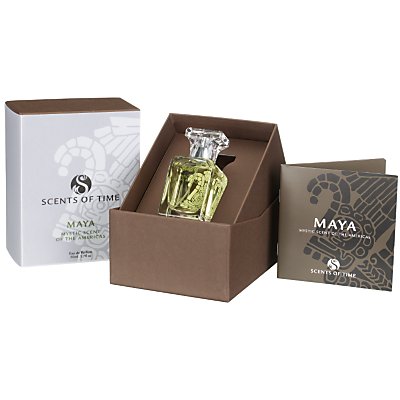 - If we look at the new Maya perfume for instance, do we know how the Mayas perfumed themselves? Was it a gesture that was part of a ritual? Were there strong notions of adornment expressed by perfume? Was it a quotidian, banal action?
- If we look at the new Maya perfume for instance, do we know how the Mayas perfumed themselves? Was it a gesture that was part of a ritual? Were there strong notions of adornment expressed by perfume? Was it a quotidian, banal action?In the case of MAYA please read the booklet (and the poem and story within it). It is a historical fact that the sacrifices to the Gods were "Put at ease" using an "intoxicating mix of heady aromas". Whilst I cannot be certain of the exact formula, chocolate and vanilla were key aromas from Mexico, and Copal resin was burned in supplication and found at the site. With tropical fruits and flowers they must have been the central aromas to the ceremony in my opinion.
But I have to say this is a reasoned thought out fantasy with best intentions. Mine is not an exact science unless I have a genuine sample. It is lateral thinking with known facts.
There is a commonality of proof that the Mayas also used intoxicating mushrooms in ceremonies as did people of the Mediterranean. Whether there was a link in terms of trade and knowledge, or whether the substances were jointly discovered in different parallels of history has yet to be proved.
But in most if not all advanced civilizations, Gods and incense/perfume went together in ceremonial and in adoption by the priesthood and royals
- Do you have any classic perfumes from the industry that you look up to?
If I chose two fragrances per decade for the last century then Guerlain would probably hold at least half of the choice. I would choose not just on aroma but on the "steppingstone " factor. Perfumes which broke a mould or advanced the art. So Jicky with new synthetics would be one, and Chypre (Coty) another. Because I am a chemist originally I like the thought that advances in chemistry gave new "colours" to our palette. So again Chanel 5 with aldehydes, Angel as the first adventurous gourmet mix of patchouli and confectionery. Not to wear personally you understand, but to appreciate the finer art of their creativity and the quantum leap in creative imagination..not "also rans"
- Have they influenced your work or is it a completely different approach? In other words, are your perfumes authentically outside of the modern Western genealogical tradition of perfumes (a phenomenon so well demonstrated by Michael Edwards in Perfume Legends)?
They have not really influenced my work. I have been focused on the past but for instance Pyxis has turned out to be a Mossy wood (chypre) and MAYA with chocolate and vanilla has nuances of Angel but without the patchouli "clout". It may be that the perfumers in working on the briefs have put in some of their own historical "attitudes" but I don't feel this is germane to the overall creativity.
When we did the Titanic fragrance purely for research reasons (to see if we could) an exact replica would not have worked today- too potent. So as for instance to make that marketable today it would have to be toned down as Poison was toned to Tendre Poison. There are also sensibilities. 1500 people died on Titanic less than 100 years ago, I would not be happy to pursue that to market.
In a sense you have hit a vein. I am trying to get people to THINK about perfume. That it is not just a shrink wrapped bottle of smelly often with no fragrance description whatsoever.
My fragrances have a story, a full fragrance description and a family. I am trying to educate the British public in the same way as 30 years of books labels and celebrities have educated us to a better appreciation of wine. We may not be experts, but we are better than our parents..we know chardonnay is a grape, Argentina is a region etc.
I am trying to tap that rich vein of history with perfumes in a similar manner and to break the complacent mould of the industry.
- Thank you David Pybus for taking our questions.
You can currently find the Scents of Time for sale online at John Lewis and later at Scents of Time







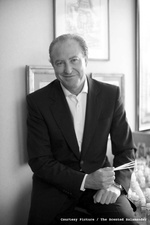
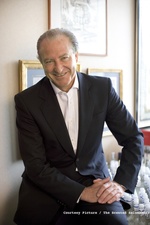
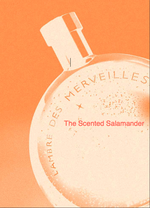
I would like to know how I may send an email to Mr. David Pybus. I live in America.
Thank you,
Pam Center
Pam,
I believe you would be able to reach him via this email: info@scentsoftime.co.uk